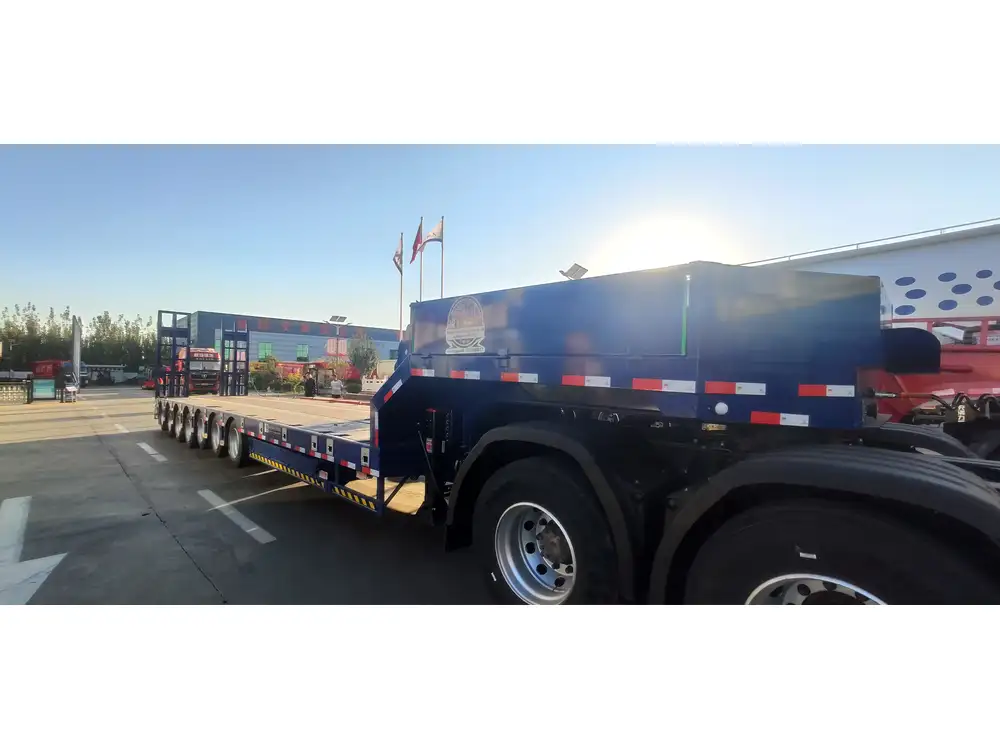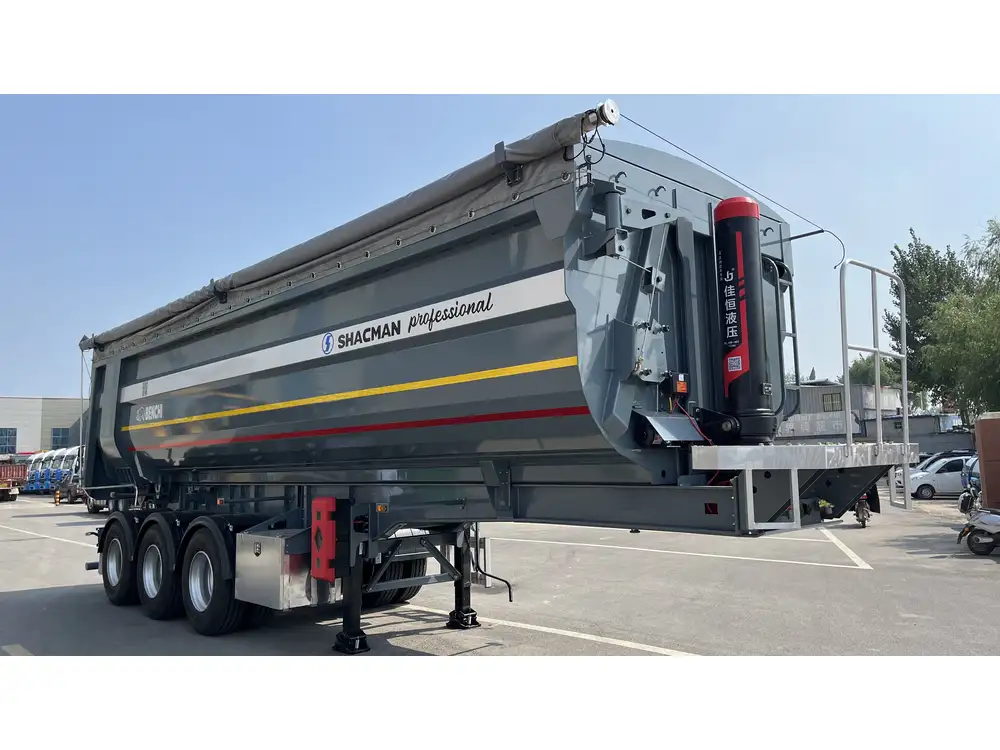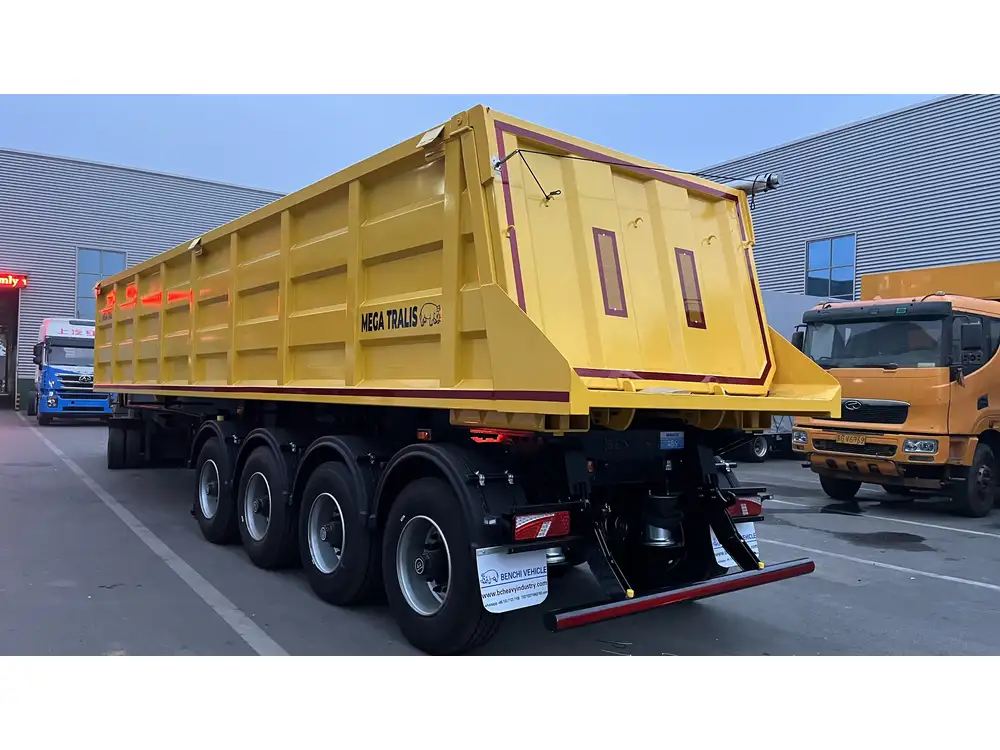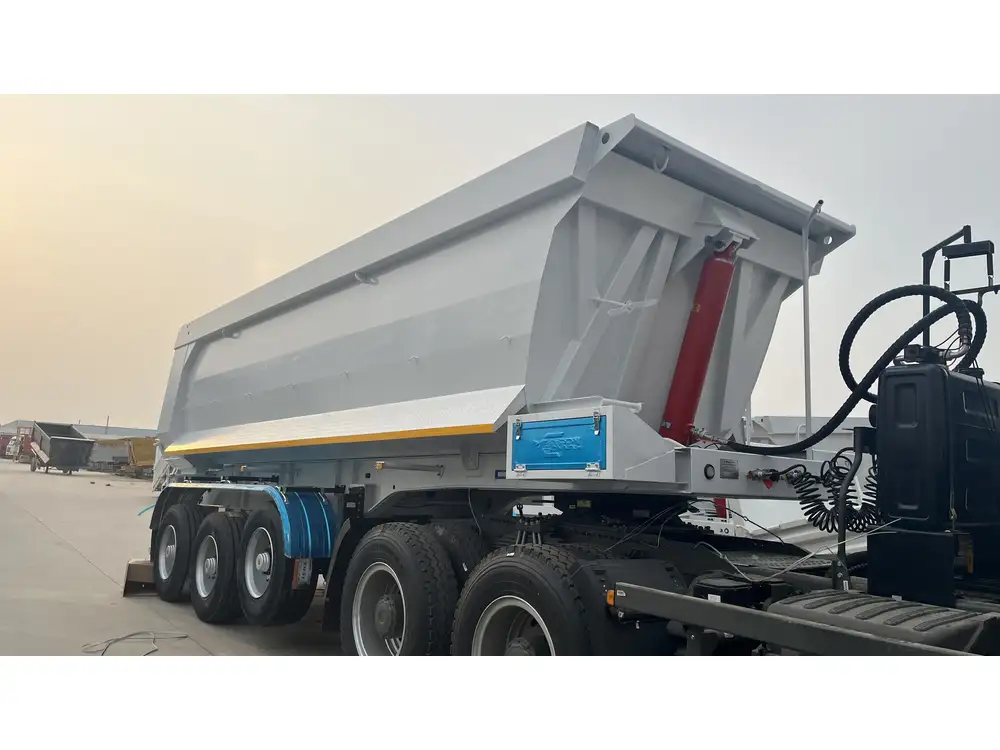When navigating the realm of transportation logistics, flatbed trailers stand out as the backbone of many industries due to their versatility and accessibility. However, the legal overhang associated with these essential transport vehicles is often misunderstood. Grasping what constitutes legal overhang on a flatbed trailer can not only avert costly compliance mishaps but also enhance operational efficiency. This article delves deeply into the intricate aspects of legal overhang on flatbed trailers, ensuring you have a robust understanding and can make informed decisions for your operations.
What is Legal Overhang?
Legal overhang refers to the portion of a load that extends beyond the boundaries of the trailer itself, subject to various regulations governing such extensions. This might include excess length, width, or height that could potentially infringe upon federal, state, or local transportation laws. Addressing legal overhang is pivotal for ensuring safe transportation while remaining compliant with applicable laws.
Key Elements of Legal Overhang
Length Limitations: Most jurisdictions impose strict limitations on how far loads can extend beyond the rear of a trailer. Typically, this is capped at 4 feet, but variations exist.
Width Restrictions: Overwidth loads, typically exceeding 8.5 feet, often necessitate extra permits and route planning to mitigate road hazards.
Height Regulations: The standard maximum height is usually set at 13.5 feet, and exceeding this requires additional oversight.
Weight Considerations: Payload exceeding federal and state weight limits can lead to severe penalties, even impoundment of your trailer.

Understanding State vs. Federal Regulations
Legal overhang is not a one-size-fits-all issue; rather, it is layered with complexities due to the interplay between federal and state regulations. Federal regulations offer a base guideline, but states can impose stricter restrictions. For instance:
| Regulation | Federal Standard | State Variation |
|---|---|---|
| Maximum Length (Flatbed Truck) | 48 – 53 feet | Some states permit 65 feet |
| Maximum Width | 8.5 feet | Some states allow 10 feet with permits |
| Maximum Height | 13.5 feet | Varies widely by state |
| Maximum Weight (Single Axle) | 20,000 pounds | State-specific variations apply |
Understanding these differences enables operators to navigate legal requirements effectively and operate within the law.
Implications of Ignoring Legal Overhang Regulations
Failure to adhere to legal overhang regulations can have significant repercussions. These include:
Heavy Fines: State and federal agencies can impose hefty fines on operators failing to comply with overhang limits, dramatically impacting bottom-line profitability.
Increased Liability: Overhanging loads can create unsafe driving conditions which could lead to accidents, elevating liability risks for companies and drivers alike.
Operational Delays: Overhang-related issues may result in hold-ups at weigh stations or check points, causing significant delays in transport schedules.
Reputation Damage: Non-compliance can lead to a tarnished reputation, affecting partnerships and future business opportunities.
Assessing Legal Overhang: Step-by-Step Guidelines
To ensure compliance with legal overhang requirements, we recommend adopting a systematic approach:

1. Measure Before Loading
Conduct precise measurements of both the flatbed trailer and the load to determine potential overhang. Ensure you account for:
- Length: Measure from the front of the trailer to the furthest point of the load.
- Width: Use calipers or a measuring tape to confirm the load’s total width.
- Height: Ascertain the height from the ground to the peak of the load.
2. Consult Regulations
Once measurements are captured, refer to both federal guidelines and state regulations relevant to your specific route and destination.
3. Acquire Necessary Permits
If measurements exceed standard overhang restrictions, it may be necessary to apply for special permits. Research local requirements and prepare to submit documents detailing load specifics.

4. Inspect Your Load Securely
Ensure that the load is secured effectively using proper tie-down methods to reduce the risk of shifting or becoming unattached while in transit. This includes:
- Utilizing appropriate straps or chains.
- Distributing weight evenly across the trailer bed.
- Making use of corner protectors to prevent load movement.
5. Use Technology to Assist Compliance
Adopting technology such as GPS and load management systems can help monitor weight distribution and provide real-time updates regarding legal compliance.
Exceptional Considerations for Flatbed Trailer Users

Types of Loads That Commonly Exceed Legal Overhang
Certain loads are more likely to face overhang issues, including:
- Construction Materials: Steel beams and lumber can easily extend beyond standard trailer dimensions.
- Heavy Machinery: Operators moving construction or agricultural machinery need to closely monitor dimensions.
- Long Pipes or Conduits: These may necessitate extending beyond standard load length.
Best Practices for Long-Haul Operations
For operators frequently involved with long hauls, adhering to these best practices will bolster compliance and operational excellence:
- Route Planning: Before departure, map routes considering low bridges, narrow roads, and other potential hazards.
- Informed Staffing: Regular training for drivers on compliance and legal overhang nuances is essential for safe transit.
- Communication: Keeping lines of communication open with local transportation authorities can promulgate a smoother journey.
Real-World Case Studies of Legal Overhang Situations
Understanding the implications of legal overhang is often best achieved through real-world scenarios:

Case Study 1: Construction Company Missteps
A construction company failed to monitor load dimensions, resulting in a 6-foot overhang. The driver was fined $1,500 during a routine stop for non-compliance. The financial impact was compounded by project delays, ultimately straining their profitability.
Case Study 2: Successful Compliance through Technology
A logistics company utilized GPS tracking and load assessment software to preemptively identify potential overhang issues. This proactive approach not only facilitated compliant hauls but also reduced transit times by 15%, showcasing the effectiveness of integrating technology into flatbed transportation processes.
Resources for Ensuring Compliance
To remain up-to-date with the legal parameters surrounding flatbed trailers, various resources and organizations can serve as comprehensive guides:
- Federal Motor Carrier Safety Administration (FMCSA): For federal regulations associated with transportation of goods.
- American Trucking Associations (ATA): Offers insight into industry standards and best practices.
- State Departments of Transportation (DOT): Direct sources of information for state-specific laws and permitting processes.

Conclusion: Navigating the Complexities of Legal Overhang
Understanding what the legal overhang entails, combined with a proactive compliance strategy, can enhance the safety of your operations while mitigating potential risks. By adopting best practices, leveraging technology, and ensuring comprehensive employee training, businesses can successfully navigate the complexities of legal overhang on flatbed trailers. In an industry where adherence to regulations is not only a legal necessity but also a cornerstone of operational success, becoming well-versed in these vital aspects will pave the path to logistics excellence.
With continuously evolving regulations, staying informed and adaptable is key. As manufacturers and users of flatbed trailers, ensuring your teams are equipped with the necessary insights will empower efficient, compliant, and ultimately successful transport logistics solutions.



